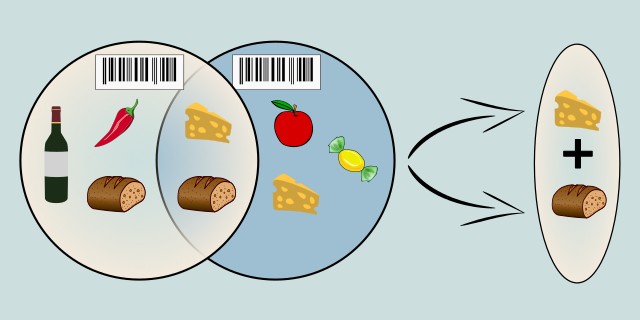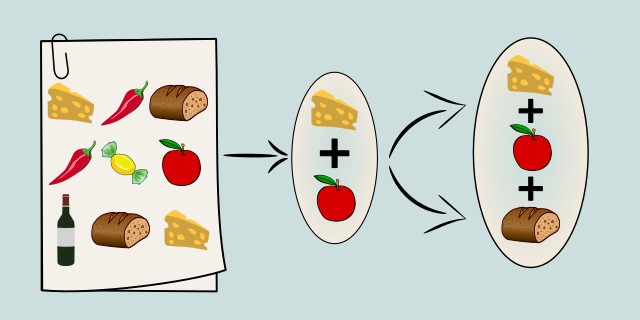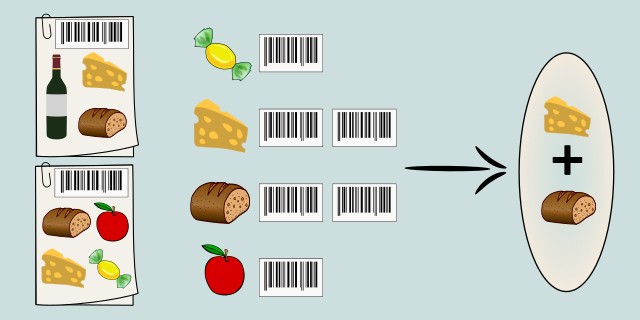Association Rule Learning
Association rule learning is a method used to discover interesting relationships between variables in large datasets. It is commonly used in market basket analysis, where the goal is to find sets of products that frequently co-occur in transactions.

Tips:
- If you prefer an intuitive, easy-to-understand algorithm that works well with small to medium datasets, choose Apriori.
- If you need a faster, more memory-efficient algorithm for large and sparse datasets, choose Eclat.
Apriori

Apriori is an algorithm used for mining frequent itemsets and generating association rules. It works by identifying individual items that occur frequently in a dataset and extending them to larger itemsets as long as those itemsets appear frequently enough, based on a minimum support threshold.
Apriori employs a breadth-first search strategy and uses the "Apriori property," which states that all subsets of a frequent itemset must also be frequent. This principle allows the algorithm to efficiently prune the search space by eliminating candidates that contain infrequent subsets. While conceptually simple and easy to interpret, Apriori can become computationally expensive on large datasets due to the exponential growth of candidate itemsets. The algorithm requires setting minimum support and confidence thresholds, which significantly influence the quantity and quality of generated rules. It's especially suited for market basket analysis, but it can be applied in any domain where co-occurrence of events or features matters.
Use Case Examples:
- Retail Recommendation Systems: Identifying which products are frequently purchased together for cross-selling opportunities.
- Supermarket Layout Planning: Optimizing product placement based on frequently co-purchased items.
- Telecom Service Bundling: Suggesting bundled services based on common subscription patterns.
- Healthcare Pattern Mining: Discovering common symptom or treatment combinations among patient records.
- Web Usage Mining: Analyzing user browsing sessions to improve site structure or recommend content.
| Criterion | Recommendation |
|---|---|
| Dataset Size | 🟡 Medium |
| Training Complexity | 🔴 High |
Eclat

Eclat (Equivalence Class Clustering and bottom-up Lattice Traversal) is a frequent itemset mining algorithm that uses a depth-first search strategy and vertical data format. It is known for its speed and efficiency, particularly when dealing with dense datasets.
Unlike Apriori, which relies on candidate generation and horizontal data representation, Eclat transforms the dataset into a vertical layout using transaction ID (TID) lists. It then finds frequent itemsets by intersecting these TID sets. This approach eliminates the need for candidate generation and often results in faster execution, especially in datasets with many frequent patterns. However, Eclat can consume a lot of memory due to storing large TID lists. It works best when the dataset is not too sparse and when high performance is needed for dense itemset mining. Eclat is a good choice when scalability is important and the dataset can be effectively loaded into memory.
Use Case Examples:
- Inventory Optimization: Discovering frequently co-purchased items for better stock planning.
- Genomics: Finding common gene expression patterns in biological samples.
- Cybersecurity: Detecting recurring patterns of events or alerts in network logs.
- Insurance Claims Analysis: Identifying common combinations of claims to detect fraud.
- Education: Mining frequent combinations of course enrollments or activity participation.
| Criterion | Recommendation |
|---|---|
| Dataset Size | 🔴 Large |
| Training Complexity | 🟡 Medium |
Feedback & Sharing
Give us your thoughts on this page, or share it with others who may find it useful.
Feedback
Found this helpful? Let me know what you think or suggest improvements 👉 Contact me.